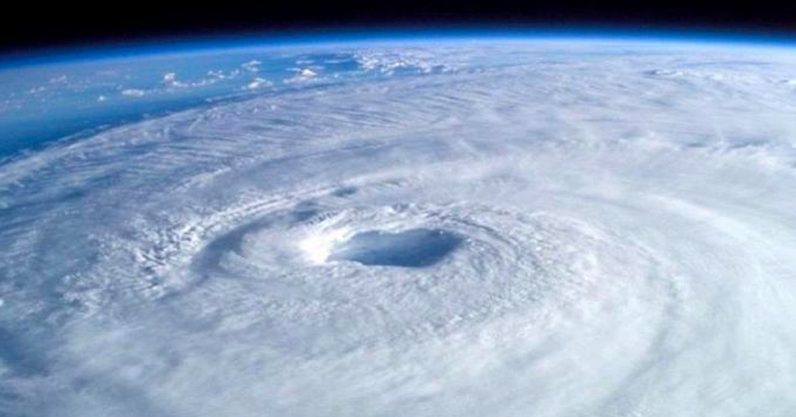
Hurricanes are well-familiar to the inhabitants of Earth, especially those in areas prone to blustery conditions. But, these terrestrial tempests are not the only form hurricanes can take.
Now, new observations show a space hurricane for the first time in the ionosphere, sitting within the upper regions of the atmosphere of Earth where gases are ionized by radiation from the Sun.
Satellite observations taken by four satellites in August 2014 show a long-lasting space hurricane over the North Pole of Earth. This tempest formed during a time when the magnetic field of our planet was relatively quiet.
A 3D map of the space hurricane, 1,000 kilometers (625 miles) in diameter, showed the storm dumping vast quantities of electrons toward the Earth. The storm, which rotated counter-clockwise and had multiple spiral arms, lasted about eight hours before dissipating.
“Until now, it was uncertain that space plasma hurricanes even existed, so to prove this with such a striking observation is incredible… Tropical storms are associated with huge amounts of energy, and these space hurricanes must be created by unusually large and rapid transfer of solar wind energy and charged particles into the Earth’s upper atmosphere,” explains Mike Lockwood, space scientist at the University of Reading.
You are… like a space hurricane…
“A drop in the ocean has no fear of a hurricane” — Aleksandr Solzhenitsyn
Hurricanes form when warm, wet air over oceans rise, creating a low-pressure system over the water. Air rushes in to fill the low-pressure region, resulting in high winds and clouds, which often results in heavy rains.
“A hurricane is clearly associated with strong energy and mass transportation, so a hurricane in Earth’s upper atmosphere must be violent and efficiently transfer solar wind/magnetosphere energy and momentum into the Earth’s ionosphere,” researchers describe in an article published in Nature Communications.
Together with their familiar cousins here at home, hurricanes have been seen on bodies in our own solar system.
“[A]stronomers have spotted hurricanes on Mars, and Saturn, and Jupiter, which are similar to terrestrial hurricanes in the low atmosphere. There are also solar gases swirling in monstrous formations deep within the sun’s atmosphere, called solar tornadoes with widths of several Earth radii,” Shandong University reports.
Astronomers know of more than 4,400 exoplanets orbiting stars other than the Sun. Many of these, like planets in our own solar system, are expected to possess magnetic fields and plasma in their atmospheres, suggesting space hurricanes could be common around the Cosmos. The fact that this high-altitude tempest formed when geomagnetic activity was low increases the odds that this phenomenon would form on other exoplanets.
We are just now on the technological cusp of being able to explore the atmospheres of other worlds. This space hurricane here on Earth could provide us a sneak preview of what life is like on distant planets.
